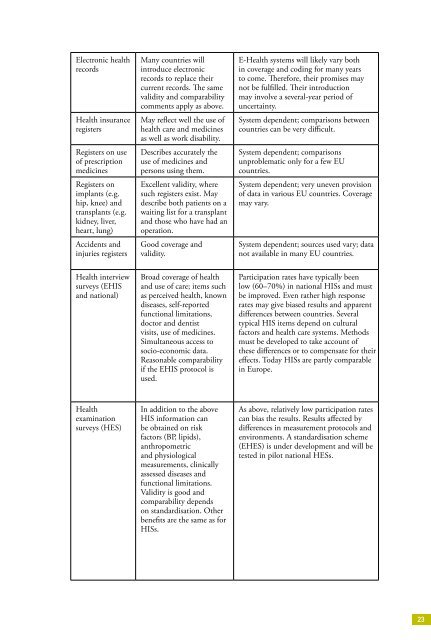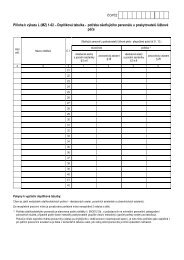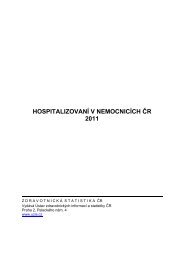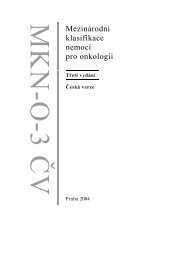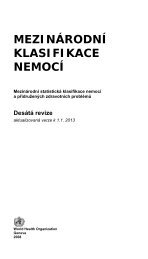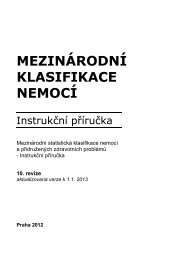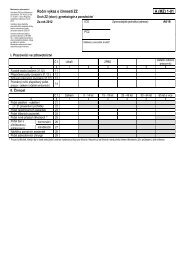ECHIM Final Report
ECHIM Final Report
ECHIM Final Report
Create successful ePaper yourself
Turn your PDF publications into a flip-book with our unique Google optimized e-Paper software.
Electronic health<br />
records<br />
Health insurance<br />
registers<br />
Registers on use<br />
of prescription<br />
medicines<br />
Registers on<br />
implants (e.g.<br />
hip, knee) and<br />
transplants (e.g.<br />
kidney, liver,<br />
heart, lung)<br />
Accidents and<br />
injuries registers<br />
Many countries will<br />
introduce electronic<br />
records to replace their<br />
current records. The same<br />
validity and comparability<br />
comments apply as above.<br />
May reflect well the use of<br />
health care and medicines<br />
as well as work disability.<br />
Describes accurately the<br />
use of medicines and<br />
persons using them.<br />
Excellent validity, where<br />
such registers exist. May<br />
describe both patients on a<br />
waiting list for a transplant<br />
and those who have had an<br />
operation.<br />
Good coverage and<br />
validity.<br />
E-Health systems will likely vary both<br />
in coverage and coding for many years<br />
to come. Therefore, their promises may<br />
not be fulfilled. Their introduction<br />
may involve a several-year period of<br />
uncertainty.<br />
System dependent; comparisons between<br />
countries can be very difficult.<br />
System dependent; comparisons<br />
unproblematic only for a few EU<br />
countries.<br />
System dependent; very uneven provision<br />
of data in various EU countries. Coverage<br />
may vary.<br />
System dependent; sources used vary; data<br />
not available in many EU countries.<br />
Health interview<br />
surveys (EHIS<br />
and national)<br />
Broad coverage of health<br />
and use of care; items such<br />
as perceived health, known<br />
diseases, self-reported<br />
functional limitations,<br />
doctor and dentist<br />
visits, use of medicines.<br />
Simultaneous access to<br />
socio-economic data.<br />
Reasonable comparability<br />
if the EHIS protocol is<br />
used.<br />
Participation rates have typically been<br />
low (60–70%) in national HISs and must<br />
be improved. Even rather high response<br />
rates may give biased results and apparent<br />
differences between countries. Several<br />
typical HIS items depend on cultural<br />
factors and health care systems. Methods<br />
must be developed to take account of<br />
these differences or to compensate for their<br />
effects. Today HISs are partly comparable<br />
in Europe.<br />
Health<br />
examination<br />
surveys (HES)<br />
In addition to the above<br />
HIS information can<br />
be obtained on risk<br />
factors (BP, lipids),<br />
anthropometric<br />
and physiological<br />
measurements, clinically<br />
assessed diseases and<br />
functional limitations.<br />
Validity is good and<br />
comparability depends<br />
on standardisation. Other<br />
benefits are the same as for<br />
HISs.<br />
As above, relatively low participation rates<br />
can bias the results. Results affected by<br />
differences in measurement protocols and<br />
environments. A standardisation scheme<br />
(EHES) is under development and will be<br />
tested in pilot national HESs.<br />
23


